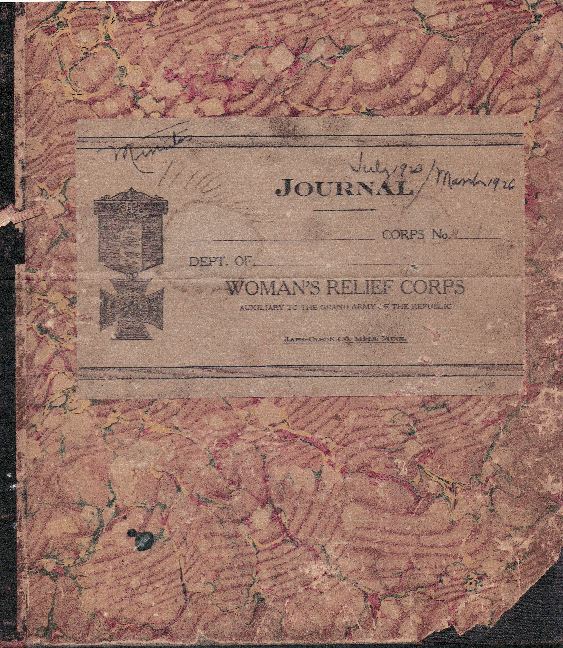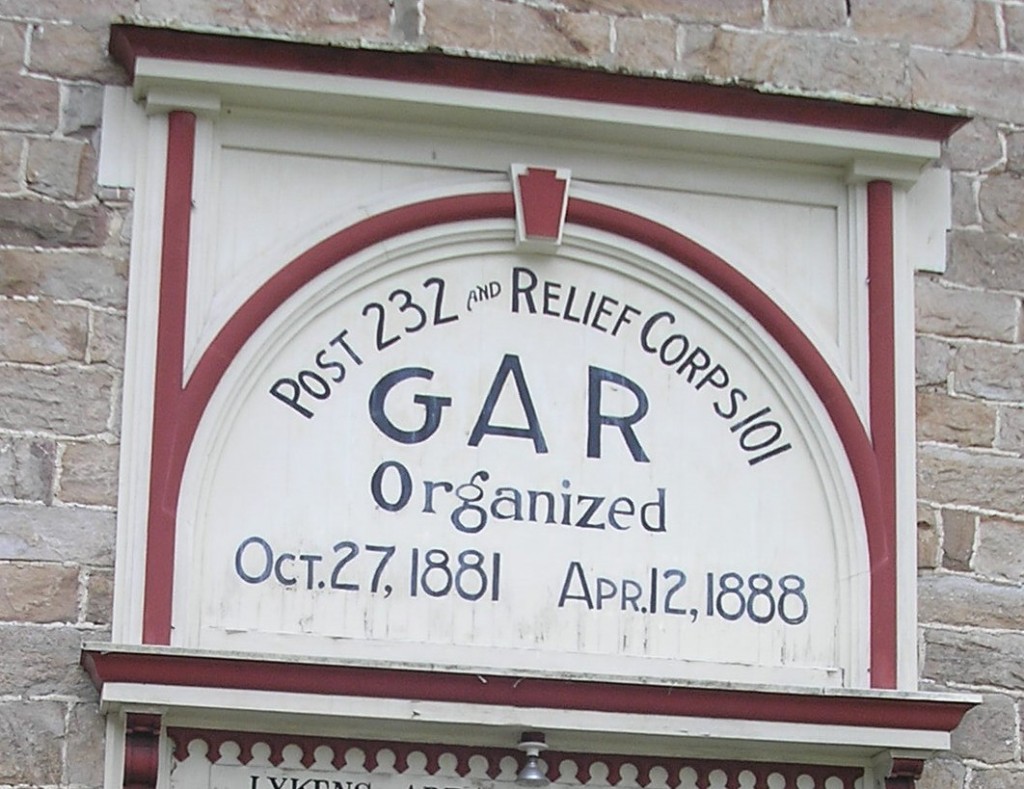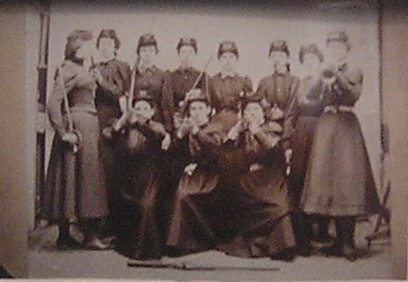Heilner Woman’s Relief Corps Minutes Discovered
Posted By Norman Gasbarro on June 6, 2011
Recently discovered at the Gratz Historical Society Library among a collection of scrapbooks and other original source materials from the World Wars, were eight minutes books from the Heilner Post Woman’s Relief Corps No. 101 of Lykens, Dauphin County, Pennsylvania. The minutes books might shed some light on the activities of this organization. Already, in a prior post, one of the projects of this group was reported – the erection of the Lykens-Wiconisco Area G.A.R. Civil War Monument.
The monument’s inscription reads:
Tablet erected by Heilner Woman’s Relief Corps, No. 101 of Lykens, Pennsylvania, in memory of the Men who enlisted from Lykens, Wiconisco, and vicinity in the Civil War, 1861-1865, and in honor of Heilner Post No. 232 G.A.R. of Lykens, Pennsylvania, organized October 27, 1881.
Above the door of the old G.A.R. Hall, the Woman’s Relief Corps is also noted:
According to the sign, the Woman’s Relief Corps No. 101 was organized in Lykens on 12 April 1888.
The photo above is displayed in the Civil War Exhibit at the Gratz Historical Society Museum. The caption reads “Civil War Woman’s Group, Lykens.” It is probably of the members of the Heilner Woman’s Relief Corps.
The minutes books begin in 1909 and continue to 1959, with a ten-year gap from 1928 to 1938. They were donated to the Gratz Historical Society at about the time of its founding (1977) and because of the dates, were incorrectly placed among the source materials for World War I and World War II.
Woman’s Relief Corps were parts of many G.A.R. posts throughout the country and were made up of mothers, wives, sisters and daughters of members. Their function was to do “work” for the posts, which were strictly male, fraternal organizations. Often the women were relegated to handling and disbursing small amounts of money to the widows of veterans – rarely more than $5 to any individual, and usually for specific purposes such as rent, coal or train fare. The funds administered by these auxiliaries were not intended as pensions, but were more or less to help the widows out of difficult situations. It was the policy in most G.A.R. posts to promote independence rather than dependence and the money collected for “relief” was voluntarily obtained from the male members. Rarely was money given to destitute men because, it was believed, that manliness and proper responsibility would prevent any men from accepting charity for the maintenance of their families.
The women in these posts saw themselves as spectators rather than participants and the men were content in leaving things that way. As was said at a California Woman’s Relief Corps in 1893, the women would rather remain as they had been in 1865 at the victory parades – standing on the sidewalks and cheering their “fathers, brothers, sons and lovers.”
The minutes books that were recently re-discoveredhave not been thoroughly examined but a quick perusal of each volume has given a clue as to what can be found there. The minutes are written in a business-like format with notations throughout as to new members joining, illness and death of active members, and activities of the corps. The handwriting is relatively easy to read and the books are in very good condition. No decision has been made on how this discovery will be used to contribute to the Civil War Research Project.
The eight volumes and the dates covered in each:
1. July 1909 – November 1914
2. December 1914 – September 1919
3. September 1919 – June 1923
4. July 1923 – March 1926
5. April 1926 – September 1928
6. April 1938 – November 1945
7. January 1946 – January 1953
8. January 1953 – December 1959
Some of the information for this post was taken from Glorious Contentment: The Grand Army of the Republic, 1865-1900 by Stuart McConnell, published by University of North Carolina Press, 1992.
 ;
;





I am researching a Confederate 10 dollar note dated February 17th 1864.
The note may or may not be of significance. On the reverse, typed across the note in red ink is a message to a “Cousin Peter”. It reads:
Cousin Peter,
Please send more Yankee
dollars to WRC.
There is a signature following the typed massage but part of the last name is illegible.
The best I can confirm is:
“Mel Glas…”
I have tried many variations of the last name but none have produced constructive results.
Mel Glasiod is the first spelling I conjured from the script signature. Unfortunately the last 3 or 4 letters are unclear.
I believe the initials “WRC” stand for the Woman’s Relief Corps, an AUXILIARY TO THE GRAND ARMY OF THE REPUBLIC (GAR).
If this is true, than the note might have been typed by a member of the WRC to her Uncle Peter.
I would like to send you scanned images of the note, but as emails with attachments usually end up in the trash folder I have not included them.
If you are interested in viewing the images please let me know.
The best clue I have to date other than ” WRC” is the signature. I am hoping the more people that view the script, the better my chances of getting the spelling correct.
If you feel there is someone who would be knowledgeable in this matter please feel free to forward this, and any other correspondence.
Thank You for your time.
Joel C. Petersen
PO Box 2020
Remsenburg, NY 11960